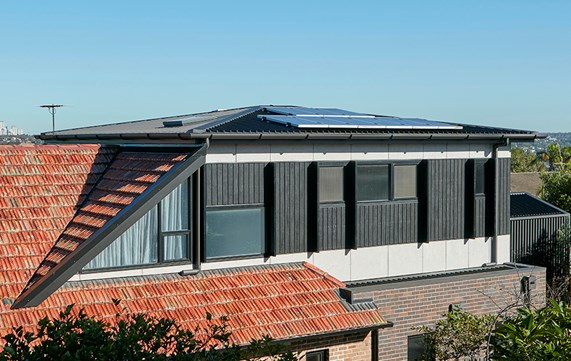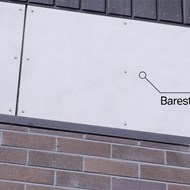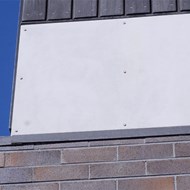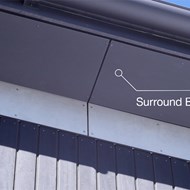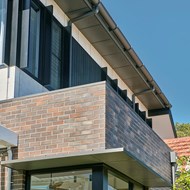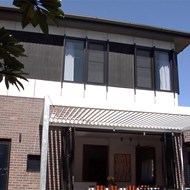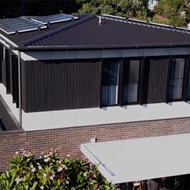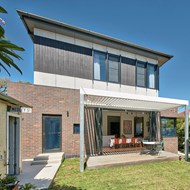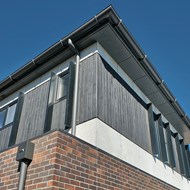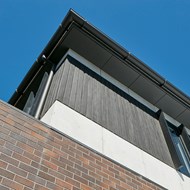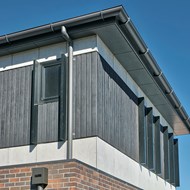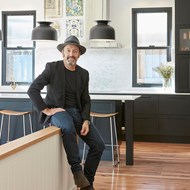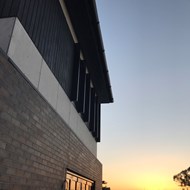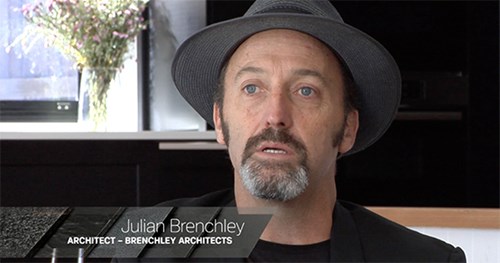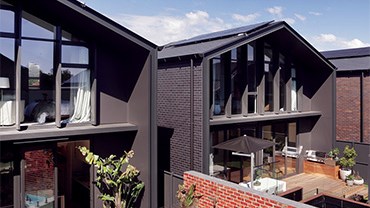For the past 14 years, Julian and his team have sourced the houses, designed the exteriors and dealt with all the planning permits for The Block – developing luxury real estate in hip suburbs of Sydney and Melbourne. So, when it came time for Julian to unleash his creative design force on renovating his own home, he knew exactly what he wanted to do and the best materials to use."
Julian’s 100-year-old Californian bungalow-style house on Sydney’s Lower North Shore already had plenty of charm and character, but he needed to create a home that would suit his family and lifestyle for years to come. “The house isn’t heritage listed so we could have knocked it down if we wanted to. But it has charm, which is something that really appealed to me in the first place,” he explains.
“The aim of the renovation was to build a comfortable and beautiful family home that’s a place for my kids as long as they need it, as well as being a practical work space.
“When it came to the exterior design, it was important to use brick because it’s a premium product that helps celebrate the older style of the house, but I wanted to contrast that with sleek, modern, fibre cement cladding.”
He chose CSR products to help him perfect the look and feel.
“I’ve been using CSR products for years – on The Block and in other projects – and I’ve always found them great to work with,” Julian says.
Julian used Cemintel’s BareStone™ and Cemintel’s Surround™ cladding for the upper level of the house.
“There were a few design challenges with adding a new extension and spaces to a pre-existing house, but I think the two types of cladding work beautifully against the brick,” he says.
Cemintel BareStone is a prefinished, lightweight cladding system that combines the look of raw cement with easy installation. The 9mm compressed panels are coated in Cemintel’s unique CeminSeal technology, which stops water from penetrating into the sheet and eliminates the need to paint on site.
Meanwhile, Cemintel Surround has a sophisticated, tactile surface and comes in a range of colours and finishes. Manufactured in Europe, Surround has superior weather resistance and strength compared to other fibre cement panels of similar thickness.
“I really like the solid, complete finish, the cladding provides. It’s unique because it’s all prefinished, you don’t have to go near it. There’s no painting required at all and it’s going to way outlast me,” Julian says.
“The other advantage is that Cemintel’s Barestone is installed as a ‘rain-screen’ facade system, where the panels are battened off the structure. This provides a thermal break, which helps reduce heat gain and heat loss providing great thermal performance,” Julian adds. The expression, detailing and express joints in the Barestone product also particularly impressed him.
“The level of detail that contractors have been able to achieve is fantastic. The tradesmen really liked dealing with the product because you could achieve crisp edges and very fine features.”
To provide a contrast to the sleek cladding and complement the heritage and style of the house, Julian used PGH Bricks Balmerino Blend from the Dry Pressed collection on the front fence and ground floor of the new extension, and in smaller parts throughout the house. Dry Pressed bricks are for those who appreciate the craftsmanship of traditional bricks. They are made by using high compression to press dry clay into individual moulds, creating a premium, solid brick with sharp, clean edges. Firing in boutique batch kilns means the bricks can be produced in a variety of crisp colours, from deep dark blues to light creams.
“I loved the design flexibility the dry pressed bricks offered – we wanted to achieve an architectural experiment of sorts by laying a solid brick base and then contrasting that with a lightweight upper floor – creating a beautiful clash of proportions and context,” explains Julian. “The Balmarino Blend brick was a great choice for our home because while they are new bricks the overall appearance and colouring is a bit more textured, and less homogeneous than a solid block/brick colouring. I chose to further highlight the colour of the brick by using a dark mortar and we opted for a traditional lay-up, as we felt the architectural statement should be more focused on the proportions and context of the build. I also felt brick was the perfect choice as I wanted a low maintenance material that didn’t require painting and repair, and knew it would provide a sound, solid structure,” Julian adds.
Julian says his house certainly stands out from the others on his block. “It’s an area where most of the homes have that classic Hamptons style, but I saw this as a great opportunity to create a beautiful classic look but with a more modern twist,” he explains.
“My family and I are really happy with the results. We’ve had a few neighbours pop their heads around and comment on the unique choice of finishes we’ve selected and how great the house looks.”
According to Julian, material selection was not only central to achieving the look, but to also ensure the build and renovation process was seamless and efficient. “Choosing this particular type of cladding with this style of brick helped us to celebrate and merge both the old and new elements of the building perfectly.
“The products are great and the CSR team are also super to work with. Their technical team are exemplary – they offer so much knowledge and support,” concludes Julian.


